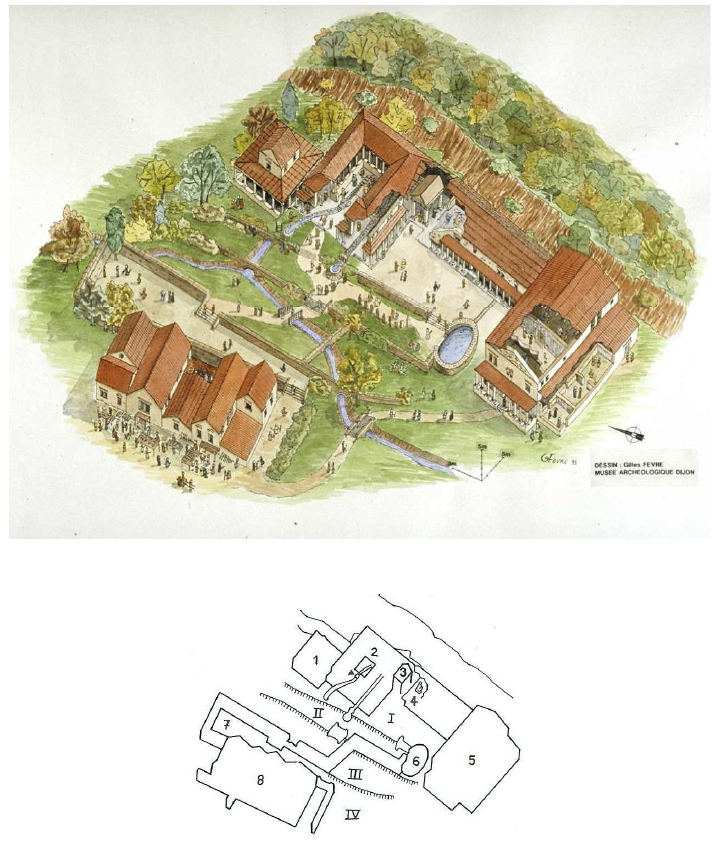f) Survivals?
There is no hagiographical tradition concerning the site of the Sources-de-la-Seine, although many stories tell of attempts of saints to overthrow and replace the indigenous gods, religious practices and traditions. It is nonetheless worth noting that a powerful abbey dedicated to Saint Seine or Sequanus was established in 534 AD ten kilometres south of the pagan sanctuary of Sequana, which was partly destroyed at the end of the 3rd c. AD during the Germanic invasions.1848 Legends recount that Sequanus’s donkey made a spring to spout up. From that time on, the saint became worshipped in periods of drought. Until the 18th c, pilgrims came to the source to attend mass and traditionally throw goblets of water.1849
A part of the site was bought by the city of Paris in 1864 and transformed into a park, where visitors may now come and throw coins into the sacred spring. In the fifties, an artificial grotto was erected near the ancient sanctuary to receive a modern stone statue of the goddess Sequana sculpted by François Jouffroy.1850 Sequana is represented as a Classical nymph, wearing leaves in her hair and a cloth around her hips and holding fruit in her hands (fig. 23).

1. fanum* (temple building) 2. portico surrounding the main spring 3. canopy* 4. possible emplacement of a cult statue of Sequana 5. ancillary buildings of unknown functions 6. oval basin containing sacred water 7. processional way 8. buildings, possibly shops, situated at the entrance of the sanctuary (I to IV are the different terraces).
